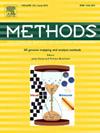Integrated analyses of prognostic and immunotherapeutic significance of EZH2 in uveal melanoma
IF 4.2
3区 生物学
Q1 BIOCHEMICAL RESEARCH METHODS
引用次数: 0
Abstract
The EZH2 expression shows significantly associated with immunotherapeutic resistance in several tumors. A comprehensive analysis of the predictive values of EZH2 for immune checkpoint blockade (ICB) effectiveness in uveal melanoma (UM) remains unclear. We analyzed UM data from The Cancer Genome Atlas (TCGA) database, identified 888 differentially expressed genes (DEGs) associated with EZH2 expression, then conducted Gene Ontology (GO) and Kyoto Encyclopedia of Genes and Genomes (KEGG) pathway analyses to elucidate biological features of EZH2 in UM assays. The correlation of the expression of EZH2 with tumor immunity related factors such as immune-related pathways, infiltration of various immune cells, immune score and immune checkpoints were explored. The evaluation of EZH2′s capability to predict immune therapy outcomes in UM was assessed by incorporating the Tumor Immune Dysfunction and Exclusion (TIDE) score. Lastly, programmed death-ligand 1 (PD-L1) expression was detected in an independent UM patient cohort by immunohistochemical analyses, the correlation of EZH2 with PD-L1 was evaluated. Results highlighted that the EZH2 expression was correlated with immune-related pathways, infiltration of various immune cells, immune score, the expression of immune checkpoints and immunotherapy sensitivity. Collectively, we suggested that EZH2 might be considered as predictor on the therapeutic effects of ICBs on UM patients, and a potential target for combined immunotherapy.
EZH2对葡萄膜黑色素瘤预后和免疫治疗意义的综合分析。
在多种肿瘤中,EZH2表达与免疫治疗耐药显著相关。EZH2对葡萄膜黑色素瘤(UM)免疫检查点阻断(ICB)有效性的预测价值的综合分析仍不清楚。我们分析了来自癌症基因组图谱(TCGA)数据库的UM数据,确定了888个与EZH2表达相关的差异表达基因(DEGs),然后进行了基因本体(GO)和京都基因与基因组百科全书(KEGG)途径分析,以阐明EZH2在UM检测中的生物学特征。探讨EZH2表达与肿瘤免疫相关因素如免疫相关通路、各种免疫细胞浸润、免疫评分、免疫检查点等的相关性。通过结合肿瘤免疫功能障碍和排斥(TIDE)评分来评估EZH2预测UM免疫治疗结果的能力。最后,通过免疫组化分析在独立的UM患者队列中检测程序性死亡配体1 (PD-L1)的表达,并评估EZH2与PD-L1的相关性。结果提示EZH2表达与免疫相关通路、各种免疫细胞浸润、免疫评分、免疫检查点表达及免疫治疗敏感性相关。综上所述,我们认为EZH2可能被认为是ICBs对UM患者治疗效果的预测因子,也是联合免疫治疗的潜在靶点。
本文章由计算机程序翻译,如有差异,请以英文原文为准。
求助全文
约1分钟内获得全文
求助全文
来源期刊

Methods
生物-生化研究方法
CiteScore
9.80
自引率
2.10%
发文量
222
审稿时长
11.3 weeks
期刊介绍:
Methods focuses on rapidly developing techniques in the experimental biological and medical sciences.
Each topical issue, organized by a guest editor who is an expert in the area covered, consists solely of invited quality articles by specialist authors, many of them reviews. Issues are devoted to specific technical approaches with emphasis on clear detailed descriptions of protocols that allow them to be reproduced easily. The background information provided enables researchers to understand the principles underlying the methods; other helpful sections include comparisons of alternative methods giving the advantages and disadvantages of particular methods, guidance on avoiding potential pitfalls, and suggestions for troubleshooting.
 求助内容:
求助内容: 应助结果提醒方式:
应助结果提醒方式:


